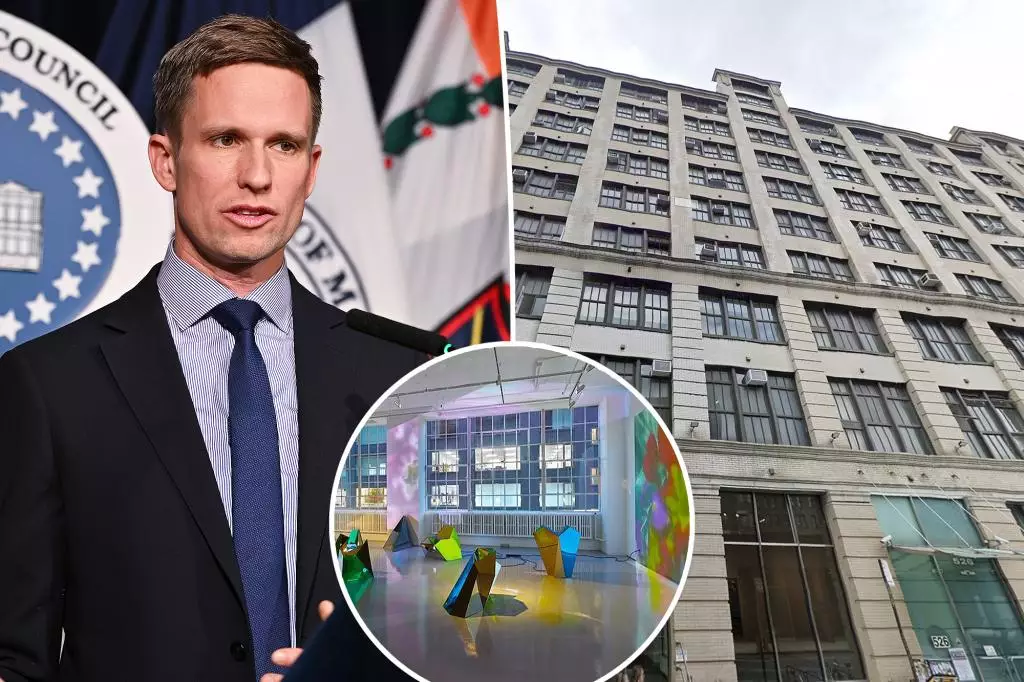As urban landscapes evolve, the spaces that nurture creativity are often placed at risk. One such focal point of artistic expression is the West Chelsea Arts Building, a prominent location that has served as a haven for artists and galleries since its inception in 1993. Philanthropist Gloria Naftali and her late husband Raymond established this hub with the noble intention of providing affordable studio spaces. It has since become a sanctuary for prestigious names in the art world, including Ross Bleckner, Louise Fishman, Glen Ligon, Gary Simmons, and Hiroshi Sugimoto. However, following Ms. Naftali’s passing in September 2022, the estate’s decision to sell this vital cultural asset has ignited a palpable sense of urgency and concern within the local community.
Community Response to the Sale
The concerns surrounding the potential sale of the West Chelsea Arts Building have prompted action from local leaders and officials. A coalition comprising City Council member Erik Bottcher, U.S. Representative Jerry Nadler, State Senator Brad Hoylman-Sigal, Manhattan Borough President Mark Levine, and Assembly Member Tony Simone have collectively expressed their apprehensions regarding the impact of the sale. They claim that the building contributes significantly to the cultural ecosystem of New York City, a sentiment echoed in a letter directed to the Raymond and Gloria Naftali Foundation. The letter’s authors assert that the building is home to around 200 tenants whose livelihoods are intertwined with this iconic space, a situation that raises the stakes for both artists and the cultural panorama of the city.
Their call for action underscores the urgency of preserving the West Chelsea Arts Building as a hub for artistic outlets and studios, emphasizing the need to consider the voices of the artists who occupy it. The apprehension articulated by Bottcher indicates a deeper fear of displacement that looms over the creative community, raising questions about the future of arts spaces in a city facing a growing affordability crisis.
Complicating the situation is the legal framework surrounding the building. In Gloria Naftali’s will, she expressed her desire for the space to remain focused primarily on artist studios and galleries, albeit without imposing a legal obligation on the foundation. This raises important questions regarding the ethical responsibilities of the Naftali Foundation as they navigate the sale, along with the potential implications for the tenants living within its walls.
Derek Wolman, an attorney representing the estate, has stated that the foundation lacks the financial capability to maintain the property, a position that stresses the necessity for a profitable sale. He noted that the proceeds would be allocated to causes that were meaningful to Naftali, further complicating the narrative of cultural preservation versus financial viability.
The West Chelsea Arts Building is emblematic of a broader trend affecting artistic communities in urban settings. The response from the local government and the community reveals a profound understanding of the implications beyond the immediate threat of eviction; this situation reflects the increasingly precarious position of artists within cities experiencing significant economic pressures.
Bottcher’s remarks about New York City’s historical role as an artist’s haven speak to the larger conversation about how gentrification and rising rents are eroding the cultural fabric that has made the city invigorating and diverse. The possible fate of the West Chelsea Arts Building could reverberate through similar spaces across the city that house artistic expression.
Given the rich history and cultural significance of the West Chelsea Arts Building, the call to action by local leaders and the broader community signifies a critical juncture for the arts in New York City. As conversations around the future of this cherished hub continue, a collaborative approach that involves the voices of all stakeholders—artists, residents, and local officials—will be essential in navigating the complexities of this situation. The potential loss of such a vital resource highlights the urgent need for community engagement and advocacy to ensure that artistic spaces can remain integral to the fabric of urban life, allowing creativity to flourish in the face of uncertainty.

